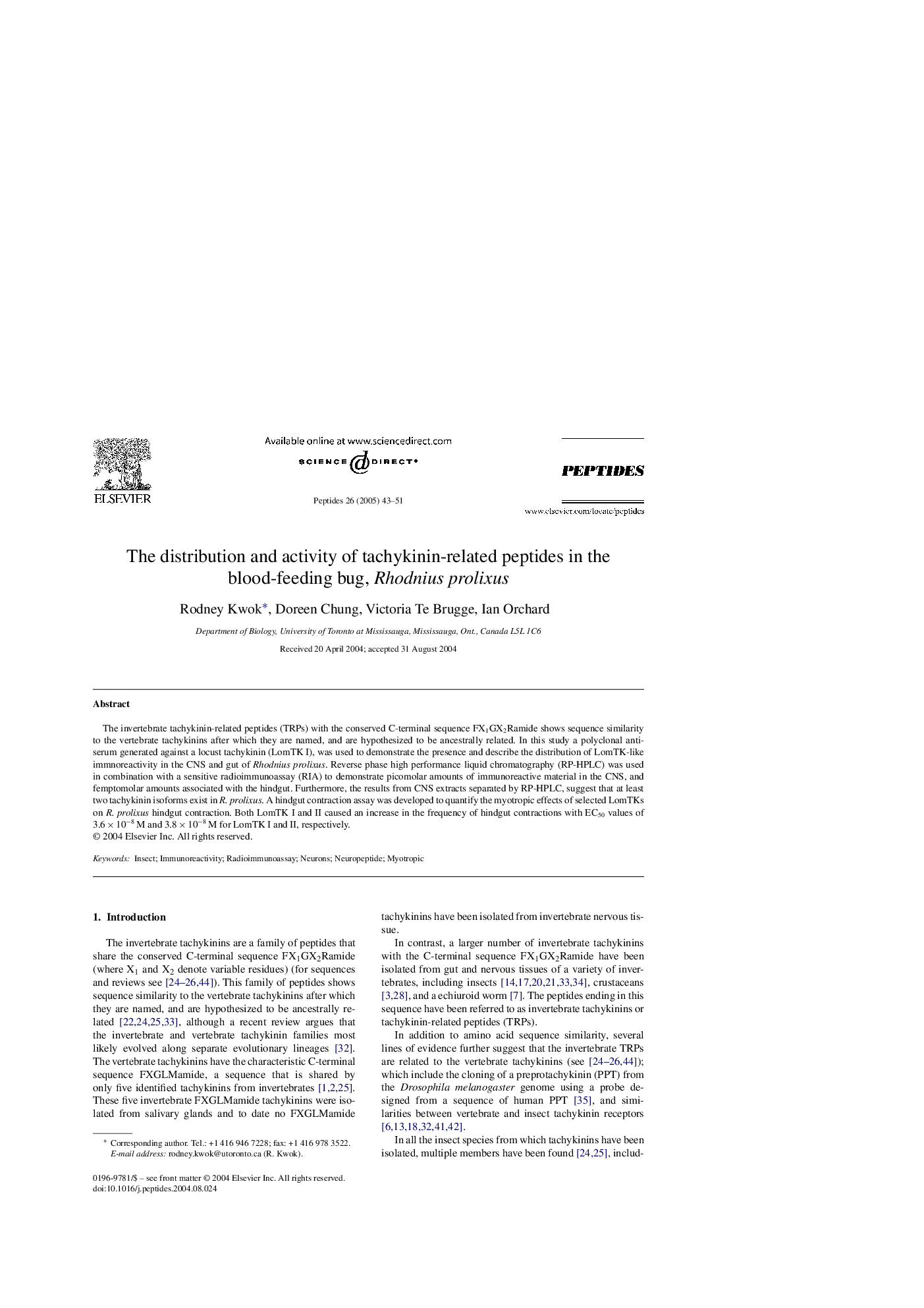| Article ID | Journal | Published Year | Pages | File Type |
|---|---|---|---|---|
| 10836394 | Peptides | 2005 | 9 Pages |
Abstract
The invertebrate tachykinin-related peptides (TRPs) with the conserved C-terminal sequence FX1GX2Ramide shows sequence similarity to the vertebrate tachykinins after which they are named, and are hypothesized to be ancestrally related. In this study a polyclonal antiserum generated against a locust tachykinin (LomTK I), was used to demonstrate the presence and describe the distribution of LomTK-like immnoreactivity in the CNS and gut of Rhodnius prolixus. Reverse phase high performance liquid chromatography (RP-HPLC) was used in combination with a sensitive radioimmunoassay (RIA) to demonstrate picomolar amounts of immunoreactive material in the CNS, and femptomolar amounts associated with the hindgut. Furthermore, the results from CNS extracts separated by RP-HPLC, suggest that at least two tachykinin isoforms exist in R. prolixus. A hindgut contraction assay was developed to quantify the myotropic effects of selected LomTKs on R. prolixus hindgut contraction. Both LomTK I and II caused an increase in the frequency of hindgut contractions with EC50 values of 3.6Â ÃÂ 10â8Â M and 3.8Â ÃÂ 10â8Â M for LomTK I and II, respectively.
Related Topics
Life Sciences
Biochemistry, Genetics and Molecular Biology
Biochemistry
Authors
Rodney Kwok, Doreen Chung, Victoria Te Brugge, Ian Orchard,
